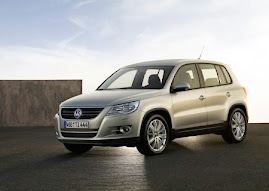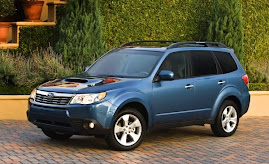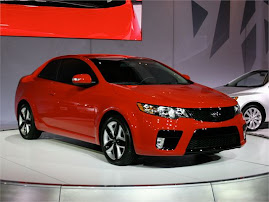Volkswagen Passat receives "Best of 2012" top-honor from Cars.com
TDI® Clean Diesel model also recognized as “Eco-Friendly Car of the
Year”
Detroit, MI - Adding to a growing list of awards, the
new-for-2012 Volkswagen Passat has earned additional praise from Cars.com for
its outstanding value and long list of standard features. Named “Best of 2012,”
the Passat captured the third annual award from the popular online automotive
source. The Passat’s long list of standard features includes Bluetooth®
technology, dual-zone automatic climate control, class-leading rear seat
legroom, and Volkswagen’s Carefree Maintenance program for a starting MSRP of
$19,995.
Prior to choosing the “Best of 2012” awards, editors at Cars.com tested more than 65 models released for 2012. Editors picked their top six before selecting the 2012 Passat as “Best of 2012.” The Passat ousted the Subaru Impreza, Range Rover Evoque, Hyundai Veloster, Hyundai Accent, and Audi A7.
In addition to the “Best of 2012” honor, Cars.com named the Passat TDI Clean Diesel model their “Eco-Friendly Car of the Year.” The clean diesel’s 2.0L four-cylinder engine produces 140 horsepower and an exceptional 236 pound-feet of torque. Boasting an industry-leading 795-mile range on a full tank, the Passat TDI manual has an EPA estimated 43 mpg on the highway. As the only affordable diesel in midsize sedan segment, the Passat delivers excellent performance while maintaining exceptional fuel economy.
“This recognition is an honor. We set out to bring to market a sedan that appealed to the American consumer in the highly competitive midsize segment and the Passat is quickly earning a spot on the U.S. consumer’s shopping list due to its exceptional value, strong list of standard features, and German heritage,” said Kevin Joostema, general manager of product marketing. “Accolades such as this indicate that we’re succeeding.”
Engineered in Germany and built at Volkswagen’s state-of-the-art plant in Chattanooga, Tennessee, the 2012 Passat has garnered praise from the automotive press since its introduction last fall. For more information on the 2012 Passat and its list of awards, visit www.media.vw.com.
About Volkswagen of America, Inc.
Founded in 1955, Volkswagen of America, Inc. is headquartered in Herndon, Virginia. It is a subsidiary of Volkswagen AG, headquartered in Wolfsburg, Germany. Volkswagen’s operations in the United States include research and development, parts and vehicle processing, parts distribution centers, sales, marketing and service offices, financial service centers, and its state-of-the-art manufacturing facility in Chattanooga, Tennessee. Volkswagen is one of the world's largest producers of passenger cars and Europe's largest automaker. Volkswagen sells the Beetle, Eos, Golf, GTI, Jetta, Jetta SportWagen, Passat, CC, Tiguan, Touareg and Routan vehicles through approximately 600 independent U.S. dealers. Visit Volkswagen of America online at www.vw.com or media.vw.com to learn more.
Prior to choosing the “Best of 2012” awards, editors at Cars.com tested more than 65 models released for 2012. Editors picked their top six before selecting the 2012 Passat as “Best of 2012.” The Passat ousted the Subaru Impreza, Range Rover Evoque, Hyundai Veloster, Hyundai Accent, and Audi A7.
In addition to the “Best of 2012” honor, Cars.com named the Passat TDI Clean Diesel model their “Eco-Friendly Car of the Year.” The clean diesel’s 2.0L four-cylinder engine produces 140 horsepower and an exceptional 236 pound-feet of torque. Boasting an industry-leading 795-mile range on a full tank, the Passat TDI manual has an EPA estimated 43 mpg on the highway. As the only affordable diesel in midsize sedan segment, the Passat delivers excellent performance while maintaining exceptional fuel economy.
“This recognition is an honor. We set out to bring to market a sedan that appealed to the American consumer in the highly competitive midsize segment and the Passat is quickly earning a spot on the U.S. consumer’s shopping list due to its exceptional value, strong list of standard features, and German heritage,” said Kevin Joostema, general manager of product marketing. “Accolades such as this indicate that we’re succeeding.”
Engineered in Germany and built at Volkswagen’s state-of-the-art plant in Chattanooga, Tennessee, the 2012 Passat has garnered praise from the automotive press since its introduction last fall. For more information on the 2012 Passat and its list of awards, visit www.media.vw.com.
About Volkswagen of America, Inc.
Founded in 1955, Volkswagen of America, Inc. is headquartered in Herndon, Virginia. It is a subsidiary of Volkswagen AG, headquartered in Wolfsburg, Germany. Volkswagen’s operations in the United States include research and development, parts and vehicle processing, parts distribution centers, sales, marketing and service offices, financial service centers, and its state-of-the-art manufacturing facility in Chattanooga, Tennessee. Volkswagen is one of the world's largest producers of passenger cars and Europe's largest automaker. Volkswagen sells the Beetle, Eos, Golf, GTI, Jetta, Jetta SportWagen, Passat, CC, Tiguan, Touareg and Routan vehicles through approximately 600 independent U.S. dealers. Visit Volkswagen of America online at www.vw.com or media.vw.com to learn more.



















_(544x408).jpg)

